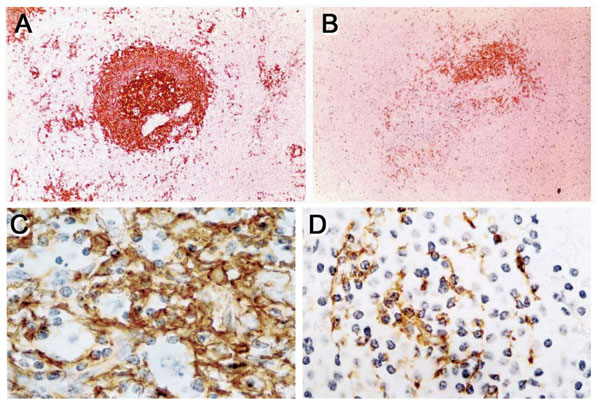Volume 13, Number 2—February 2007
Synopsis
Immune Cell Apoptosis Prevention as Potential Therapy for Severe Infections
Figure 2

Figure 2. Immunohistochemical identification of B cells and follicular dendritic cells in spleens of patients dying of trauma or sepsis. Total B cells are decreased in the spleen of a patient with sepsis (B) compared with that of a trauma patient (A) (magnification ×400). Similarly, follicular dendritic cells are decreased in the spleen of a patient with sepsis (D) compared with that of a trauma patient (C) (magnification ×600).
Page created: June 29, 2010
Page updated: June 29, 2010
Page reviewed: June 29, 2010
The conclusions, findings, and opinions expressed by authors contributing to this journal do not necessarily reflect the official position of the U.S. Department of Health and Human Services, the Public Health Service, the Centers for Disease Control and Prevention, or the authors' affiliated institutions. Use of trade names is for identification only and does not imply endorsement by any of the groups named above.